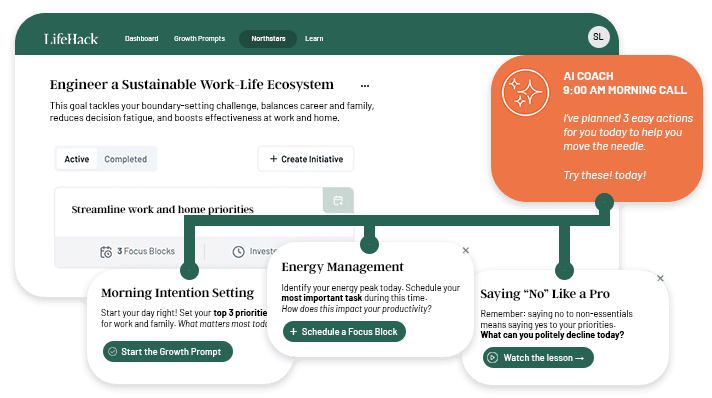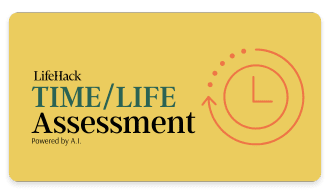Do you feel painful when you’re reading a proposal with hundreds of pages? The same feeling goes for people who write them.
People struggle about how to write a good and comprehensive proposal and get their ideas heard. But they don’t want to receive a comment saying ‘too long didn’t read’. So it’s time to make good use of executive summary to highlight your ideas as no one will really read through every single word if there’re hundreds of pages.
An executive summary summarizes a report, proposal, or any kind of document. Unlike an abstract, an executive summary is a condensed version of the full document rather than an overview or orientation. It is mainly produced for business proposals, allowing readers to be rapidly acquainted with a large body of material without actually reading it.
A good executive summary can impress your readers immediately. Here I’ll provide everything you need for a good executive summary.
An executive summary is your pitch.
Imagine you’re in a bookstore looking for a book. How would you decide which one to be bought? I’m sure you’ll have a look at the cover, and then turn to its back and read its summary.
An executive summary is similar. It is an essential gateway for your business plan to get read. The aim of it is to grab readers’ attention and make them want to know more about whatever the document is presenting.
While for an entrepreneur, the one who writes the document, it is also important. Writing an executive summary helps you to develop a better vision of your business, and you have a more visualized picture of your story. You will come to know which aspect of your company has the clearest selling points and which requires more clarification.
Keep it to one page, followed by easy-to-skim subsections.
An executive summary is to grab attention instead of to provide details. So you should keep it short and concise.
One page should be enough to cover all the essential elements of an executive summary. Emphasize your main points and highlight those important findings or special ideas only. Don’t try to present all the graphs and figures in such limited space. And don’t waste a single word in an executive summary. Every word should exist with a clear purpose there.
Subheading is always important. By dividing your document into subsections, readers can skim through it quickly and easily. They can grasp your ideas within a minute or two by only reading the subheadings. This also helps you to organize your ideas in a much clearer way, which would be easier for readers to follow.
Make each section clear with the following structure.
Generally, a well-structured executive summary should include:
- the mission statement
- company information/background
- (growth) highlights
- your products/services
- a summary of future plans
But what exactly should be included in different parts of an executive summary?
It’s straightforward for the mission statement. It explains what your business is all about and the goal of your business.
For the part about company information/background, think of the important events of your company history. When was your business formed? Where was it formed? Who founded it? What are their roles. You can also mention the size of your business and anything you think remarkable.
What makes your business outstanding? When you talk about highlights, you can include examples of business growth, such as financial or market highlights. Profit margin, market share, or any index you find impressive. Graphs and charts can be also included. But one or two will do.
Unlock Your Time Potential: From Chaos to Control
Discover how to reclaim your time and transform chaos into productivity with our comprehensive Time/Life Assessment.
If you're ready to take control of your time and boost your efficiency, don't miss this opportunity to get a personalized analysis and action plan.

You should also briefly describe your products/services you provide. Consider if your readers are familiar with your products or services. Try to provide a slightly more detailed description if your readers are not familiar with them.
A summary of future plans is to explain where you would like to take your business. It can be in short-term or in long-term. Your readers are interested to know if you share the same vision.
Some good examples of executive summary
Let’s take a look at the below extract which outlines what information the report deals with and see if you think it’s good.
Example 1
It (the report) highlights what type of consumer buying or business buying behaviors are displayed in the purchase of a product or service and explains why each behavior may occur. This enables a conclusion to be drawn from applying theory to reality.
What do you think? Good or bad?
I’d say it’s not a good one. It indeed briefly presents the idea of the report but it fails to provide a summary of the results gained, conclusions drawn and recommendations made. Readers gain nothing after reading such executive summary.
Example 2
The below is an extract from a sample executive summary for a Washington, D.C., bakery:
By creating a new niche in the restaurant industry, Rutabaga Sweets will increase sales by more than $145,000 over three years while maintaining a gross margin of 80%. Through a philosophy of “nothing but the best” regarding both product and service, Rutabaga Sweets will establish itself as an exceptional dessert bar in Washington DC. We also will gain a competitive advantage in take out and catered desserts.
See the difference? It provides figures and a concrete summary instead of a vague one. While your readers are reading, they can really feel your determination from your wordings.
If you’re interested in reading more good examples, you can refer to this one for an online pharmacy and this one for a pet care service center.
Remember, your executive summary is the first and probably the only chance for you to impress your readers. So avoid any silly mistakes and be ready to showcase your brilliant ideas!
Featured photo credit: Flaticon via flaticon.com
Ready for a Goal Breakthrough? Unlock Your Personalized Strategy

Experience the power of a strategy tailored just for you.
Our personalized system provides:
- Custom-crafted action steps based on your unique situation
- Insights tailored to your specific challenges and strengths
- A personalized roadmap to turn your goals into reality
Tailored recommendations powered by smart analysis















































